“The religion of one age is the literary entertainment of the next” - Ralph Waldo Emerson
Every country and every religion has it’s own share of myths and epics, which guides and inspires people to be a better version of themselves. Many of these legends gradually fade away, in passage of time; but some stay alive in mind and souls of it’s people. The following descriptions, are about those heroes and men, who are still alive in the hearts of the people who believe in them & and if we take a closer look, we would find, that many of these stories are rooted in real facts.
This is a story described in Bible – Book of Judges (No ,it was not pure story of imagination, real facts are described later) about Samson, a hero in ancient Israel, who in spite of his superhuman strength ( an older version of Hulk ), was destroyed by the love of his life – Delilah, (who may not have loved him in return). As the story goes, Samson’s superhuman achievements are described, included killing a lion with bare hands and killing an entire army of his enemies, classically described as Philistines ( people who were foreign oppressors & had conflict with the Israelites), using only a jawbone of a donkey. The secret of his strength, lay in his uncut & long hair, which his enemies did not know. So they bribed Delilah, offering her 1100 silver coins. After many unsuccessful attempts, Delilah finally convinced Samson to tell her, his most important secret about source of his strength, which he did.
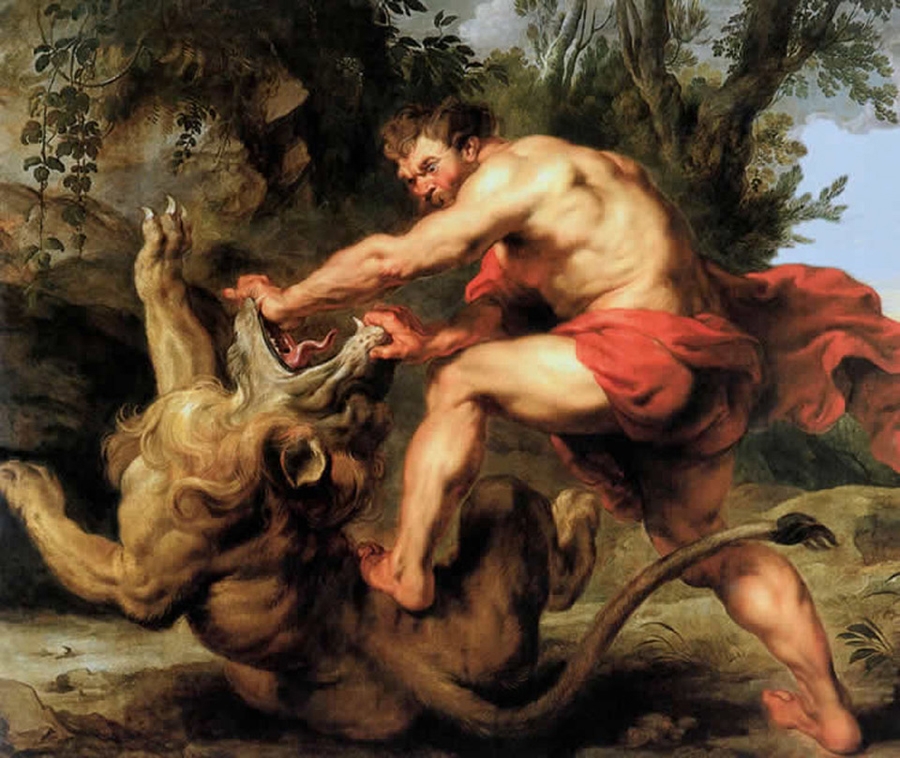
While Samson was asleep, Delilah shaved off Samson’s hair (some version say a servant/barber did it) & afterwards handed him to his enemies, who in turn plucked out his eyes and forced him to grind grain in a prison. After some time, his enemies, the Philistines brought Samson to their temple & tied his arms to two pillars, on two sides by an iron chain, so their people can see the helpless Samson and have fun at his expense. Samson realizes that his hairs have grown back, and so has his strength; Samson pushes the pillars on two sides and brings the temple down. Thus he achieves his greatest victory, in death as he dies with all his enemies.
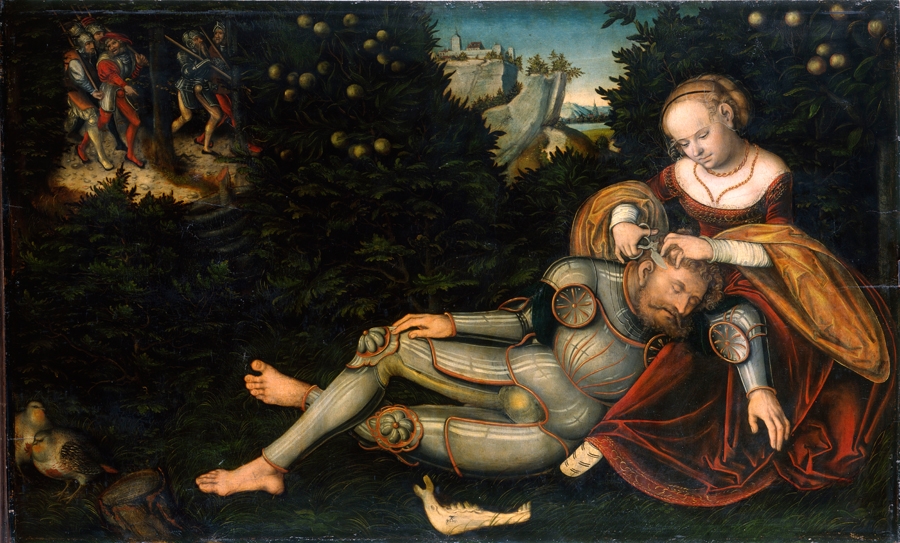
The war of Israelites with Philistine ,actually happened & the fact that they were mortal enemies of Israelites is well proven, as the fact, that they had gods and culture, which the Israelites saw as barbaric. A tiny seal, about half inch wide was found in Beth Shemesh ( the city of Israel where Samson was allegedly born & later buried), which showed a man fighting with a lion (which was a part of Samson legend). The most important part of this discovery is the fact that the seal was made in 12th century BC, which was supposedly the time, when Samson lived, according to myth. The practice of blinding prisoners, before being put to work in mill houses grinding corn is also well documented, in that era.
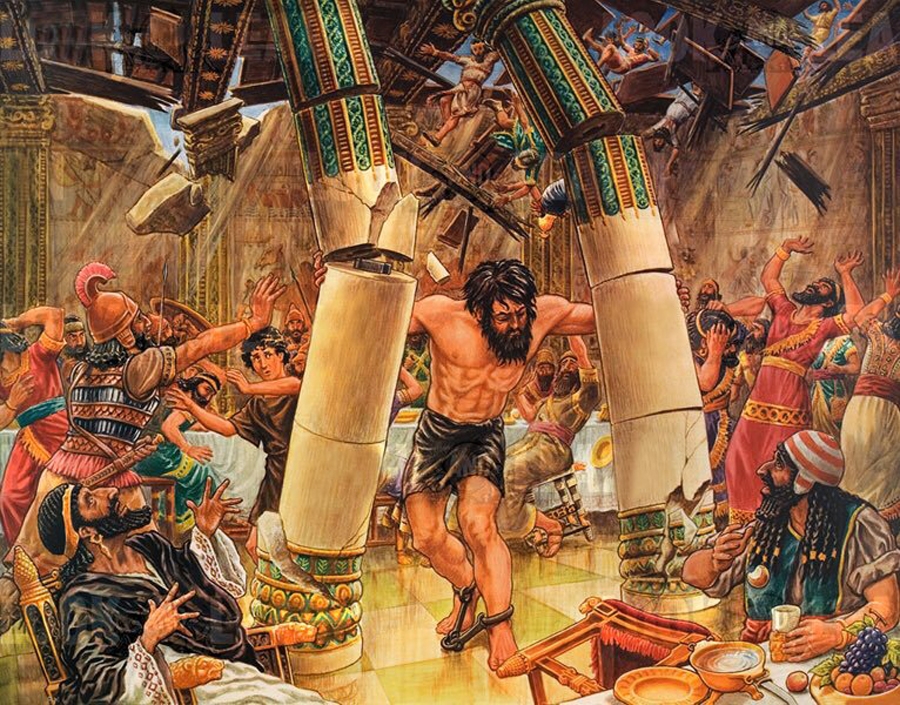
According to Bible, Samson pulled at the pillars in Philistine temple and brought down the whole infrastructure of the temple, was also theoretically, not impossible. Two pillars made of cedar wood resting on a stone base ,and situated very close to each other; formed the foundation and support of the Philistines temples, of those times. So a large built man ,can technically stand between the two pillars and push to free the pillar from the stone base & to bring down the roof ( although the number of people that a temple like this can accommodate may not have been very large). All these coincidences make many people believe that although some stories may have been exaggerated, but a man with immense strength, may have lived in the period described; but there is no way of being 100 % sure about an individual, who lived 3000 years ago.
The blockbuster Hollywood movie-- Troy, starring Brad Pitt in lead role, rekindled people’s interest in the story of Troy, which is based on epic – Iliad (and it’s second part-Odeyssey) . Iliad is an ancient Greek poem, which contains 15,693 lines and is written by Homer, who was a blind poet and belonged to a coastal area of Asia Minor, in present day Turkey. The poems were composed around late 8 th century BC, but the plot of the story goes further back to a period of 12th century BC. The story tells about the 10 year war that happened between coalition of Greek states against the Kingdom of Troy. The plot describes how Paris, the prince of Troy elopes with Helen, the queen of Sparta and wife of King Menelaus, after the two fall in love, while Paris was in a diplomatic mission to Sparta. King Argamemnon, who was brother of King Menelaus, and ruler of kingdom of Mycenae; was highly enraged by this, as he had negotiated the marriage of his brother- King Menelaus to Helen. So King Argamemnon sent messengers, to all other kings of Greece, to send their forces, so that they could go to Troy and bring Helen back, even if it required a war with Troy. It is said that a huge force of Greek alliance set sail, with 1186 ships, under commander in chief -- King Argamemnon .
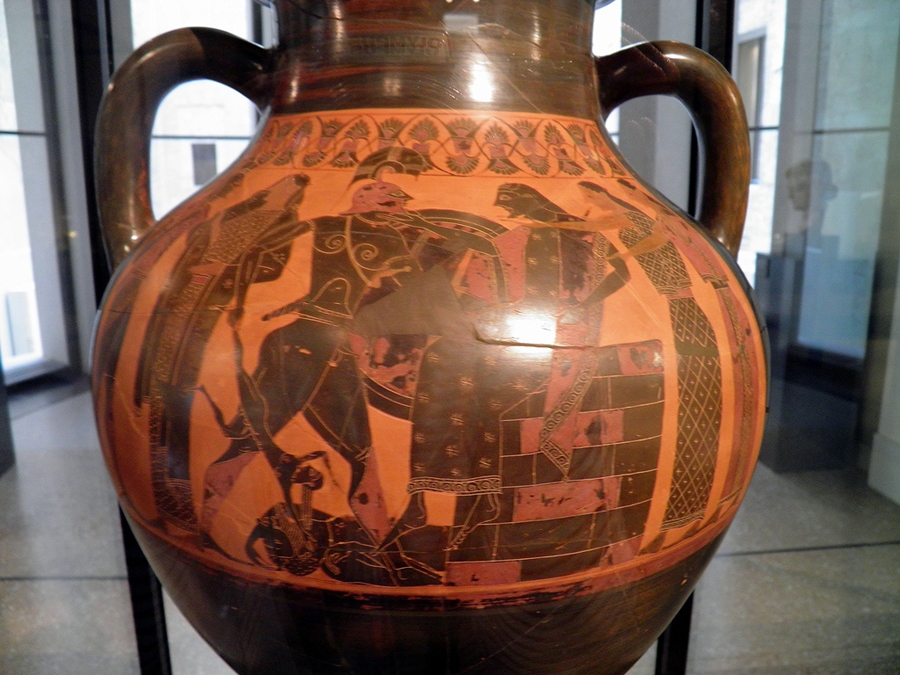
On the other hand, Trojans also rallied it’s allies, leaving no option, but of war. The Greek forces, surrounded Troy and fight ensued. The war continued for 10 years, with casualties on both sides. The final end of the war came with a treacherous act. The Greek forces, realised that they could not win the war in a straight forward way, so they came up with a new plan. They created a giant hollow wooden horse, filled it up with select soldiers, while the main army pretended, to sail away.
The Trojans, took the bait & overjoyed that the Greek fleet had left, took the wooden horse inside the city, as they considered horse sacred and wanted to keep a memento. While the Trojans were sleeping at night, the soldiers hiding inside the wooden horse, came out and opened the city’s gate, through which the main Greek army (which was in hiding) entered the city. The people of Troy, were sleeping and not at all prepared for fighting. The result was a total bloodbath of the Trojans. Most of the people were killed, the royal lineage eliminated, city was burnt & rest were taken as slaves back to Greece, only a handful manage to escape (whose descendants later formed Rome ). But for majority of the victorious Greeks it was not happily ever after, as they suffered natural mishaps like shipwreck or other tragedies on their way back home.
Many ancient Greeks and historians like—Thucydides, believed that the war was a historical event, and not purely a figment of imagination, by a writer. Modern writers also believe that Troy was a real city and Trojan war really happened. These facts have been confirmed by not just one but many people who were experts in their relative subjects. In 1870 a German adventurer named Heinrich Schliemann, excavated in Hissarlik , near to modern city of Canakkale , in Turkey and came to conclusion that the unoccupied archaeological site, was the site of ancient Troy. In more modern times, in year 2001, geologist John Kraft and an expert on old classics – John Luce, corroborated Heinrich Schliemann’s findings regarding location of Troy; after finding similarity between landscapes & coastal features described in Iliad, and present geology and location described by Schliemann.
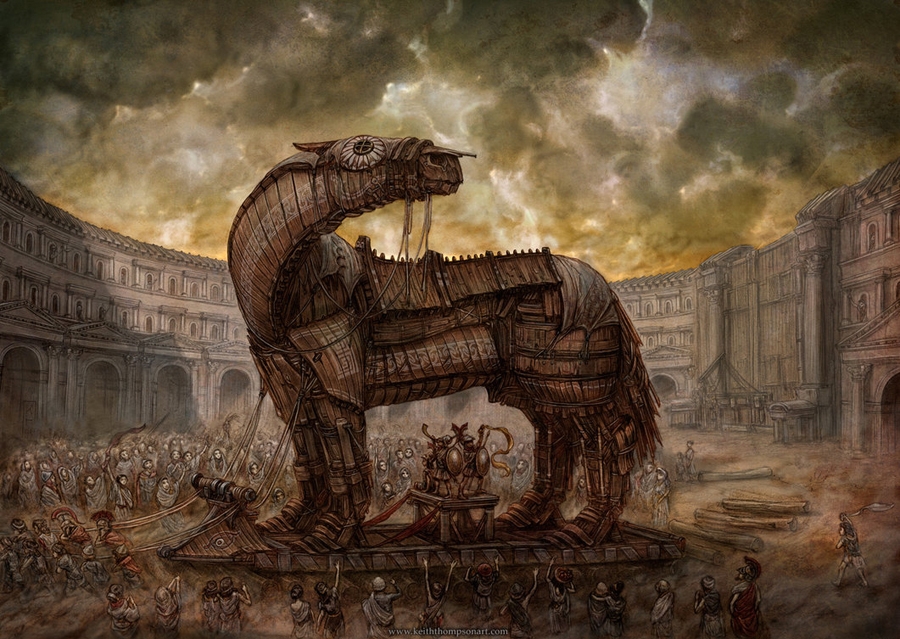
The site described by Schliemann contained nine cities, which were built on top of each other (Newer cities came up above the ruins of the older one, in the same site). Modern day archaeologist believe that, the sixth & seventh oldest layers, had the city – which best fulfilled the description of “Troy” as described by Homer. That basically meant, the legendary city of Troy, was built over the ruins of a older city previously present in the same site & new settlers again rebuilt over the ruins of the legendary city of Troy (after it was destroyed in the war) – so at the same site another newer city came up above the older one.
The reason for choosing the two layers are – the sixth oldest city, was breath taking and spectacular and strong like Troy, that Homer had described and archaeologists have even found fortifications designed to protect against chariot attacks & Mycenaean Greek pottery in the city- proving Greek presence in the city; but the fact which goes against the city, is that the city was destroyed by an earthquake and not war. Some expert believe that, Trojan Horse was a metaphor for the Greek god of - sea and earthquakes (Poseidon), who was also associated with horses. So Trojan Horse was in real sense an Earthquake, which engulfed and destroyed the city in 1250 BC.
The seventh oldest city, which was much smaller in scale than the one previously described, was destroyed in 1175BC. There were ample evidence to prove that the city, had being attacked and surrounded by enemies, and had fighting at close quarters – evident by; presence of arrowheads, scattered skeletons and charred debris in the streets. Finally this war had destroyed the city. Eric Cline an archaeologist and historian at the George Washington University in Washington, D.C. believes, that Homer, was knowledgeable about the above mentioned facts – which had happened just 400 years ago from his time, and blended them, to come up with a grand saga of a 10 year war, that would immortalise him as the creator of a masterpiece work of art.
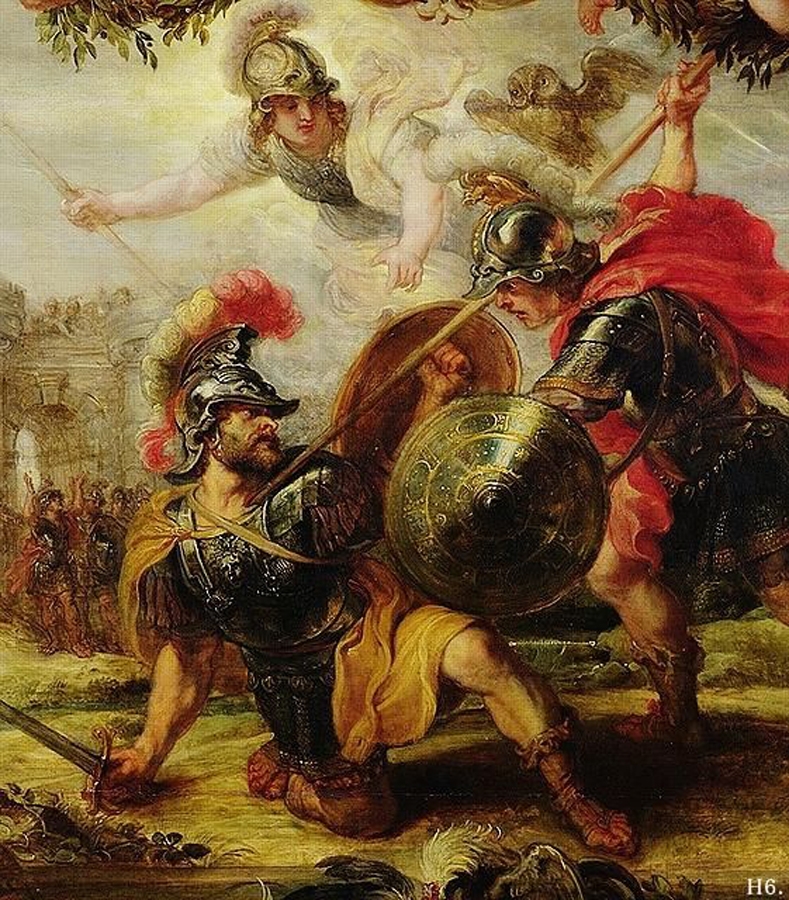
As far as the grandeur of the city of Troy is concerned, that could have been explained by it’s strategic location by the sea. With the Greek kingdoms in the west and the Hittite empire in the east, it was at a very favourable position for seafaring merchants, who would have been taxed for using the local port. This richness may have inspired, their neighbours to invade Troy and the resultant war. Records found in Egypt mentions certain sea people from Italy, who visited Troy around 1200BC (the same time, when Trojan war occurred). So it is very obvious that city of Troy was real and a war did occur; as far as the story of a prince eloping with a queen of another country and causing a war between two countries is concerned, we will never know -- it may or may not have happened.
With passage of time, the city of Troy, was again rebuilt and experienced many ups and downs. Many conqueror of the future like Xerxes, the Persian king and later Alexander the great, would stop their journey at the site and pay homage to Troy. Troy was given a special status by Alexander the Great, which continued in the Roman empire;. as the Romans believed that, Romulus and Remus, the founders of Rome were descendent of the Trojan hero – Aeneas. By 13th century AD, the place was reduced to farming village. At present Troy is a UNESCO World Heritage site and popular place for tourist to visit in Turkey.
Moses is a important key figure in Bible and credited with giving the ten commandments. He was born to Jewish parents, who along with other Jewish people, were enslaved in Egypt and were forced to work as slaves to the reigning Pharaoh. At the time of birth of Moses, the Pharaoh had ordered his soldiers to kill all Hebrew babies – as an ancient prediction had predicted the birth of a messiah, who would set all slaves free and would be responsible for devastation of Egypt. So Moses’s Hebrew mother, to save his life, put him in a small basket and cast him in river Nile, so the baby could go away (hopefully to safety) with the flow of the Nile. That basket was found by Pharaoh’s daughter who adopted the child as her own and he was raised as a prince in royal household. After seeing an Egyptian soldier hitting a Hebrew, Mosses kills him in anger and escapes from Egypt to Midian, and later marries Zipporah, one of the seven daughters of Reuel, a Midianite priest.
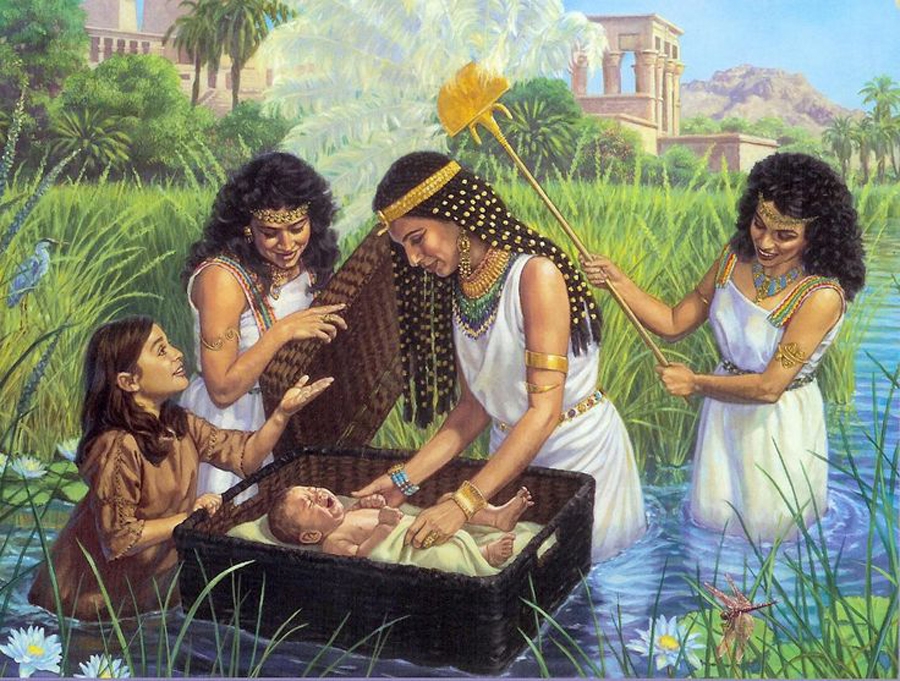
Later working as a shepherd, he encounters god in form of burning bush, who orders him to go to Egypt, as his representative and secure the release of Hebrew slaves. Moses now aware of his true identity, goes back to Egypt and asks the Pharaoh, to release the Israelites. The pharaoh refuses, following which god unleashes 10 plagues on Egyptians. By the 10th and last plague , all first born of Egyptians die and the pharaoh is forced to agree to terms of Moses. Moses along with his brother -Aaron and sister -Miriam, leads the exodus of Israelites from Egypt to freedom. He leads them through Red sea (where the sea parted for the Israelites, but closed in & drowned the Pharaoh’s army with chariots when they tried to cross it, in pursuit of the slaves ) and then brings ten commandments from Mount Sinai, and again leads them through desert for 40 years and finally dies (on mount Nebo) after transferring his responsibility to Joshua, who leads his people to the Land of Israel.
The Book of Exodus, in holy Bible – describing the above facts, has been always controversial. For every claim made, there has been a counterclaim. At the end, it always comes down to friction in belief, between atheist and believers. People see what they want to see and the story of exodus, is no different .
The most important facts ,which goes against the story of exodus, rises when the story is taken literally as it is. The description of exodus says that number of Hebrew slaves & their families, all taken together may have numbered close to 2 million people. If so many people lived as slaves in Egypt, then there should have been some records, but there aren’t any. Moreover some critics believe, if such a large amount of people move in row of eight people, arranged side by side, then by the time the people present at the front reach the promised land, half of the people would still would be present in Egypt. Moreover such a large number of people, moving for 40 years in desert, should have left some evidence. But no graves or other any evidence in support of such travel have been found. Then there are sceptics, who can’t agree on the date & time, when the exodus supposedly occurred.
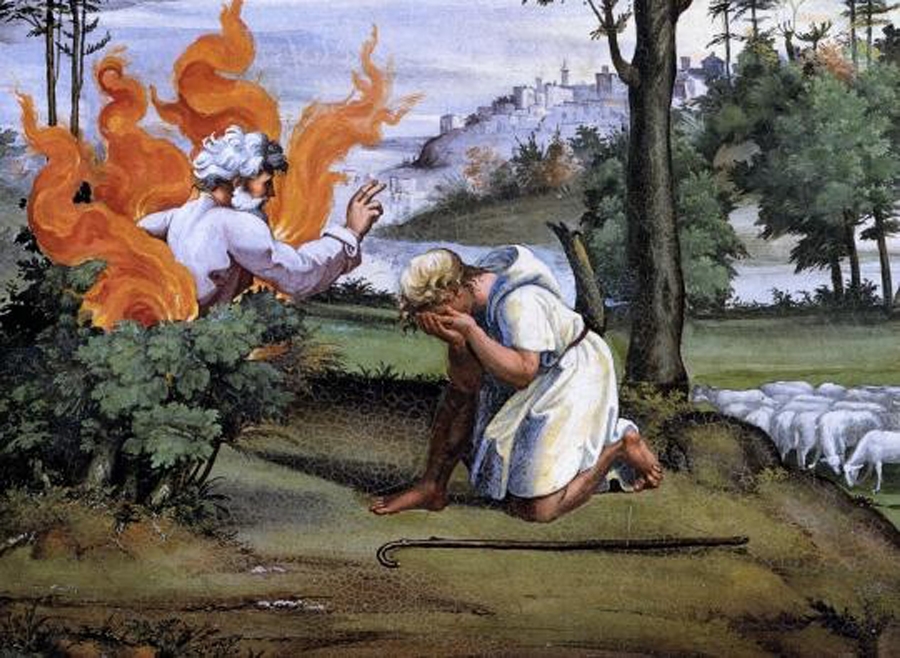
The other point which goes against, is absence of any mention of natural calamity in old records of the time, as the 10 plagues described in the book. The parting of Red sea and passage of Israelites through it has also been challenged. Their final destination – the promised land was also under Egyptian rule at that time (as available history records prove), so moving from one part of Egypt to another does not make any sense. Many scholars believe it is a story written by people, who came much later.
The supporters of Exodus, believe their claim, comes from few basic logical explanations. They say that absence of proof is not the same as, proof of absence. It has been said that, of the area mentioned in Bible only 1% area have been excavated and so there is ample probability, that something may have been missed. Some also believe that many of the statements in book of Exodus are symbolic and just used as a metaphor. Taking them in their literal translation, would not convey their right meaning. Finally there are some people, who claim to have found evidence, supporting the exodus.
Let’s start with logic of the people who believe absence of proof is not same as proof of absence. Pharaoh Akhenaten, who ruled for 17 years and died around 1336/1334 BC, changed Egypt’s tradition of worshipping multiple gods to worshipping, a single god - God Aten (State policy was changed from polytheism to monotheistic ). This decision didn’t go down very well with his people and they were not accepted by majority. After his death, all his statues and monuments were destroyed, and his name removed from king’s list. If Egyptian could do this, to their erstwhile king, would they keep memories of their slaves, who not just insulted Egypt’s power but also may had caused serious socio-economic imbalance ?
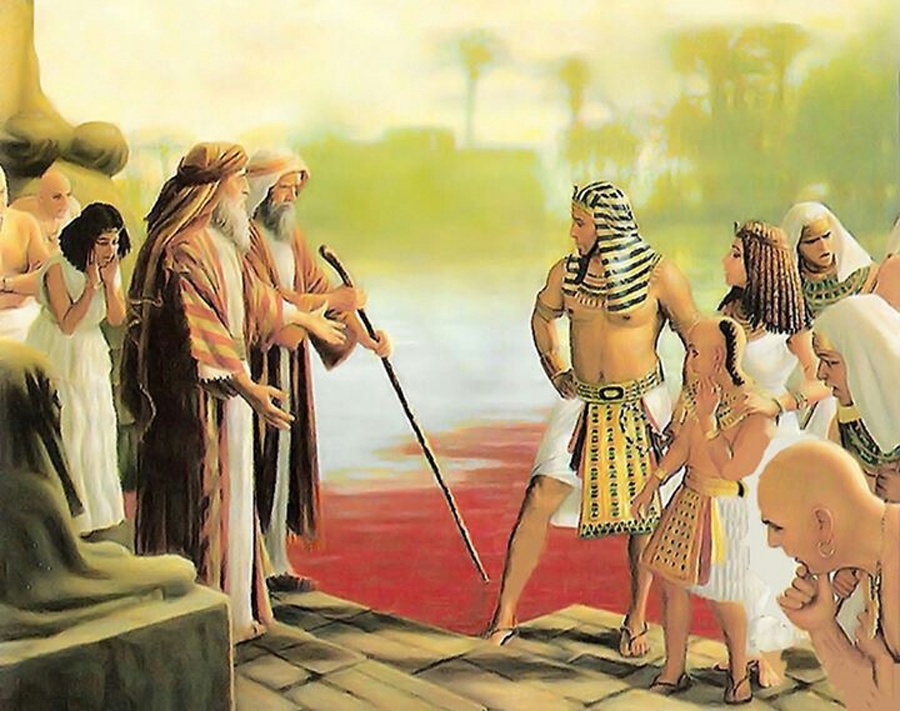
The argument has also been given that the number of Hebrew slaves leaving from Egypt were relatively small and in no way the 603,550 men, aged 20 and above with their livestock and families as described, but a relatively smaller number like 600 families, an exaggerated number was given to give an impression of a nation. Such a small number of slaves ,who owned almost nothing would not have left much evidence anywhere. Finally there are people, who believe to have found real evidence. They say that Bible mentions the name of places (that were in some way involved in the story of Exodus) like cities build by slaves -- Pithom, Ramses, and crossing of Yam Suph (Red sea); which corresponds to Pi -Ramesse, Pi – Atum and Pa- Tjuf respectively in Egyptian texts, belonging to Ramesside period (1292 – 1069 BC) and many believe Pharaoh Rameses II (who was a historical figure and lived in 13th century BC ) was the Pharaoh, who was the King of Egypt at time of exodus. Chariot wheels, of Egyptian origin have been found in bottom of Red sea, which belongs to the period in which exodus supposedly happened.
Some scholars also say that, they have found direct evidence, on the walls of the valley of the kings in Egypt, showing graphic depictions( by Egyptians themselves) on these tombs -- of the splitting of the sea. Scholars have also said that, there are indeed Egyptian documents, which mentions the exodus incidents .These scholars maintain that proof were always present, it somehow was missed by the majority/mainstream archaeologists.
Different scientist have given different hypothesis, to explain the plagues that occurred before the exodus. Some have said that a climatic change, may be the cause of the plagues, seen in late 13th century BC, during the rule of Rameses II. Some have said that all the water in Nile turned red, not because of presence of blood, but due to algae named Oscillatoria rubescens. The plagues of darkness and hail, could be explained by volcanic eruption in close by island of Santorini, present in the Mediterranean. (Unfortunately this occurred couple of centuries before Rameses II). A tsunami has been attributed to the drowning of the Egyptian soldiers and chariots. Highly qualified experts in oceanic sciences, have proved that it’s possible for strong enough winds to simultaneously split and drain sea water, and these facts were also proven in 1882, when scientists observed the Nile delta literally split in two by strong winds.
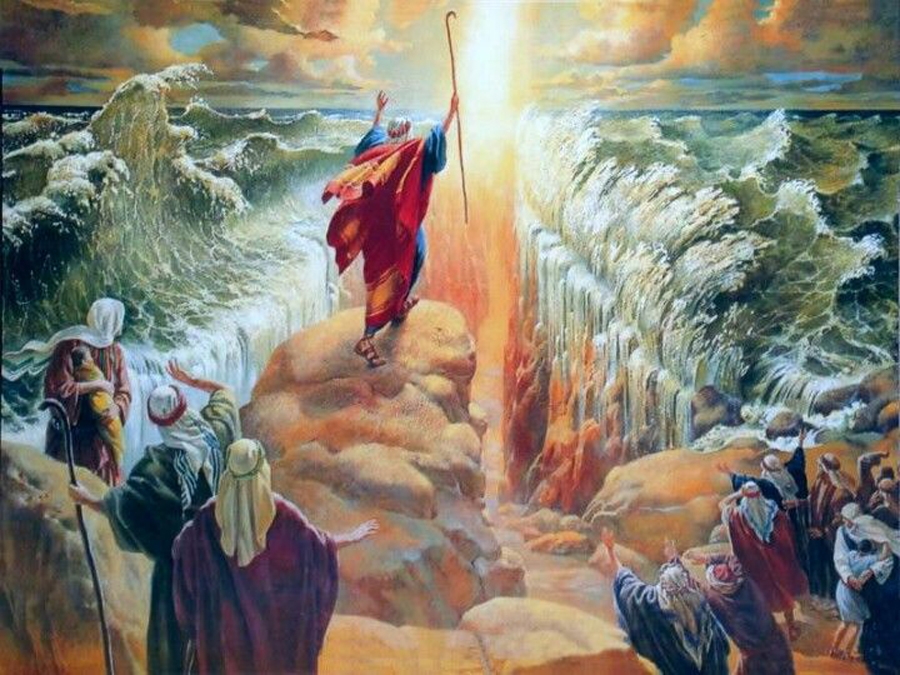
So in the end ,we have three categories of expert opinion 1) Who believe that the whole exodus is a piece of fiction, created many centuries after the period described. 2) The people who belief, that many incidents of the exodus happened, but separately at different period of time; and some incidents mentioned were just metaphors 3) Lastly there are people who believe, that that the whole incidence as mentioned, really happened. Whatever may have been the truth, the tale of oppressed men rising up against, a tyrant ruler, has always inspired the people, in their difficult times; hence survived for more than a millennia.
Ramayana is one of the most sacred text for people of Hindu religion. It describes the life of Lord Rama (one of the many human incarnation of god – Vishnu, one of the holy trinities in Hindu religion) and his struggles to get back his wife – Sita (who is again human incarnation of Goddess Laxmi, wife of God Vishnu), who was kidnapped by Demon King – Ravan. The Sanskrit epic was written by Hindu sage – Valmiki, describes how ,Lord Rama, the crown prince of Kosala kingdom, whose capital was - ‘Ayodhya’ (a city in northern India) , accepts exile to the forest for 14 years, along with his younger brother Laxman and wife Sita, to fulfils his father’s promise.
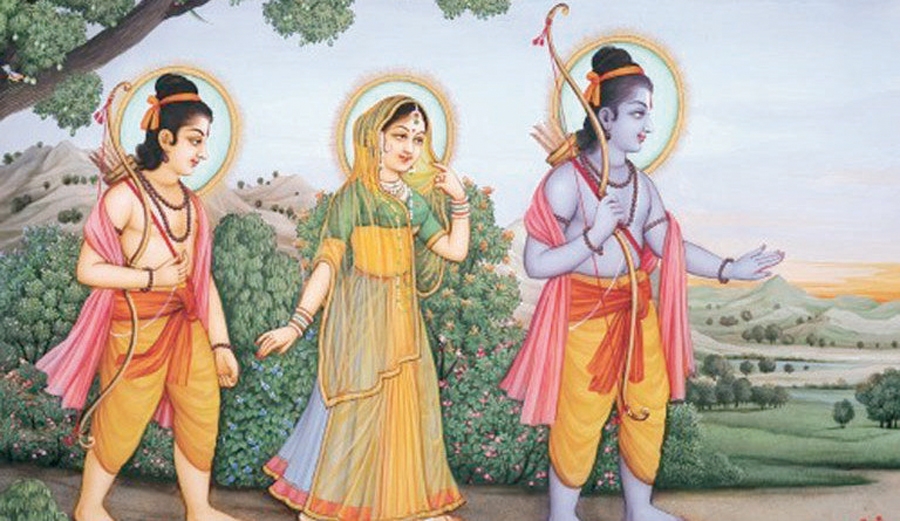
In the forest, while Lord Rama and his brother are absent from their hut, the demon king – Ravan comes and kidnaps his wife. The remaining story revolves around, how Lord Rama meets monkey prince, Sugriva ( who becomes the king of his kingdom, by Lord Rama’s help) and his trusted friend and minister -Hanuman(who had super strength and super powers to change his shape, as per his wish), and how together they fight demon king -Ravan (who is the ruler of Sri Lanka), kill him (along with his generals & army) and return back home victorious, with crown princess- Sita.
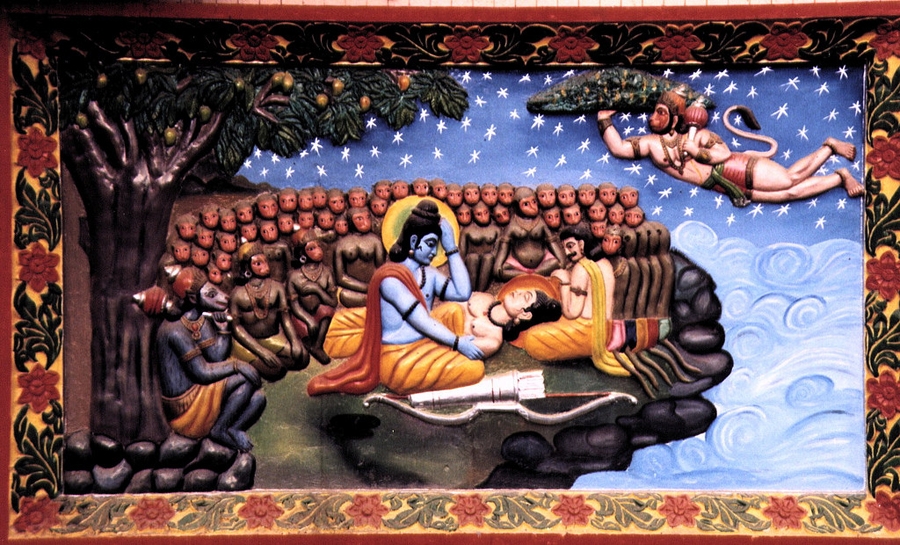
The Ramayana is one of the largest epics of the world and consists of 24,000 verses. Many also believe that it forms the heart and soul of India and in other countries like - Nepal, Sri Lanka, Thailand, Cambodia, Malaysia, Indonesia, Burma; where Hindu’s live. Most Hindus, worship Lord Rama, as a god (He was a avatar/incarnation of God Vishnu, in human form) and his birthplace – Ayodhya, is considered a sacred city. The epic itself hold the same status for Hindus, as Bible is for Christian believers. It portrays and gives guidelines for future generations, how – an ideal king, an ideal father, an ideal brother, an ideal son & an ideal wife, should behave. It set a benchmark as, how an ideal Hindu family in ancient India, should act in their daily life.
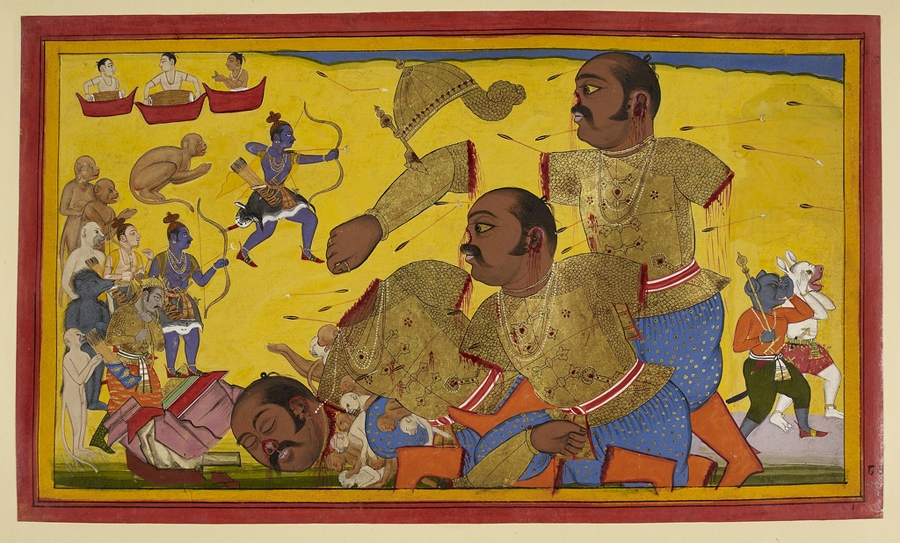
There is much controversy, regarding the date, as when was this epic written ? Because a lot’s of people believe that Ramayana is not just mythology, but real history that happened approximately 7000 years ago and a lots of signs have been found to suggest, that it may be true to a great extent. Lots of findings have been found in real life, which is mentioned in the epic. Some of them are –
After kidnapping Lord Rama’s wife Sita, demon king Ravana, took her to Sri Lanka and kept her in a garden called – Ashok Vatika. In Sri Lanka, there is a real place called Ashokavanam, which fits the description of the epic. It is said that when Hanuman reached, Sri Lanka, he had increased his size tremendously. Near Ashokvanam, where Sita was held prisoner, giant sized foot prints have been found, (which is much larger than normal human being ).
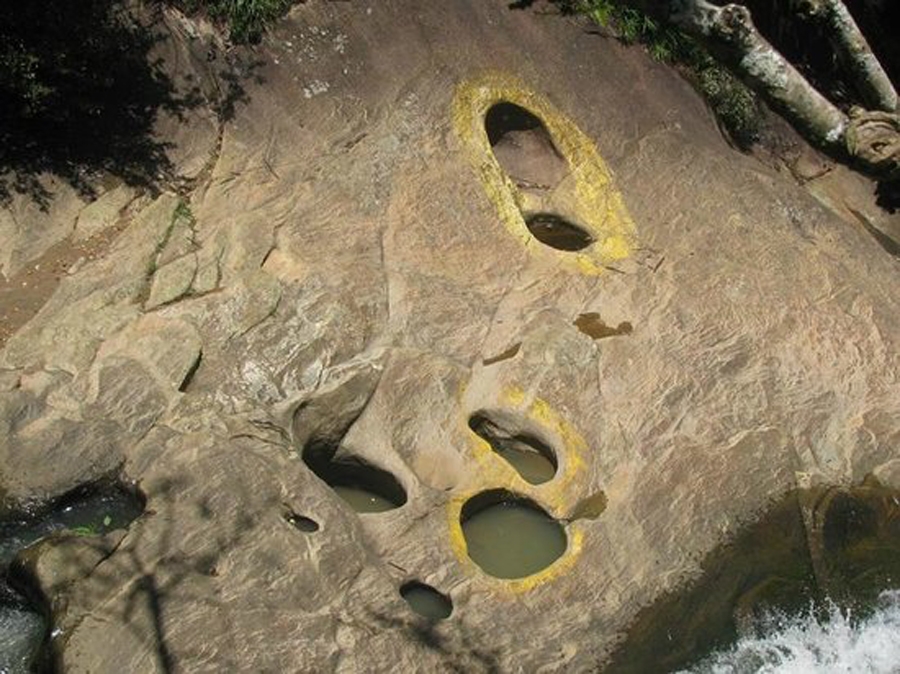
Lord Rama, with his wife and younger brother spent a considerable time of exile in a place called Panchvati. In western part of India, there is a place called panchvati, near the city of Nasik, which fits the description given in the epic.
It is said that when Hanuman, went to Ravana’s kingdom, for searching Lord Rama’s wife, he set fire to a vast part of his kingdom. A part of Sri Lanka, where Hanuman set fire to the palaces and houses still show scorched earth look.
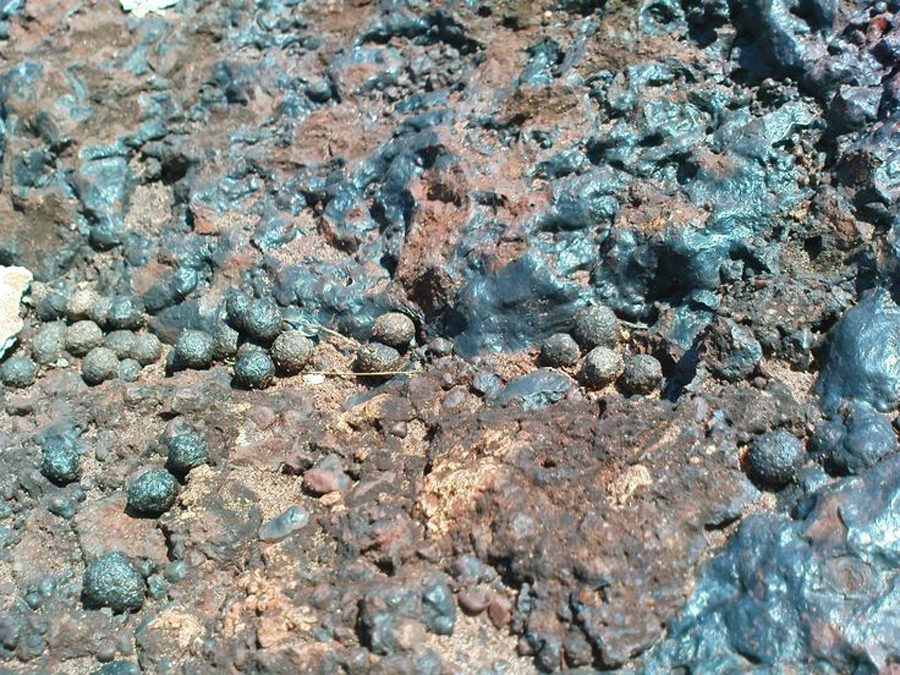
In Ramayana, it is described that the demon King Ravana, made hot springs to supply natural hot water to his subjects. These hot springs are still found in Sri Lanka.
The Cobra hood cave mentioned in the text, is indeed present in Sri Lanka. There are also many ancient drawings present in it.
The epic describes the building of a bridge, by Lord Rama’s monkey army, connecting India to Sri Lanka, so that Lord Rama’s army can reach Sri Lanka. This evidence is still present (Rama Sethu / Adam’s Bridge), and it has been proved to be an artificially built structure.
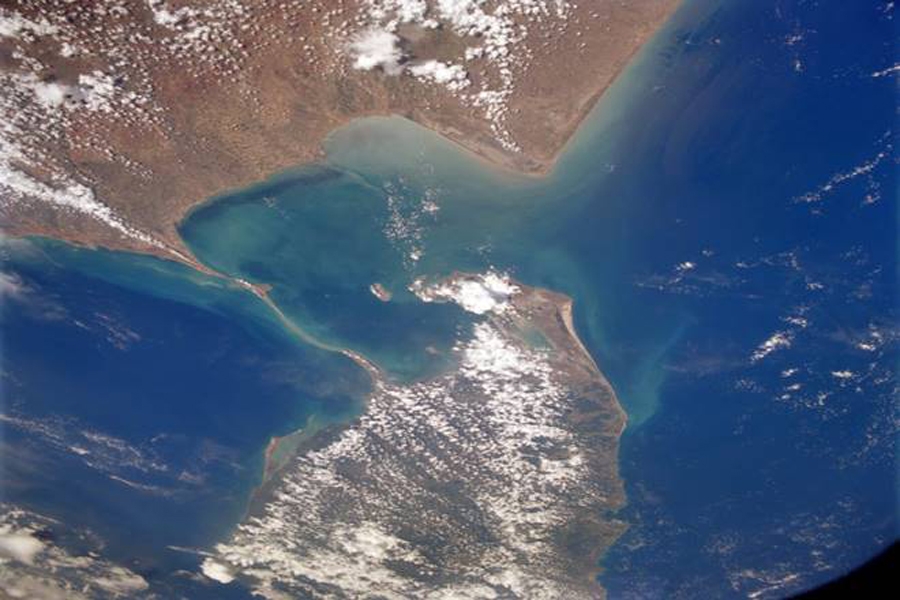
For building the bridge, floating stones were used, according to the epic. These floating stones can still be found, in area mentioned.

It is mentioned in the epic, that Hanuman (after increasing his size tremendously ) had brought a mountain full of herbs, for their medicinal effects, to treat Lord Rama’s wounded brother and other wounded soldiers during war with the demon king, from Himalayas to Sri Lanka. Amidst tropical Sri Lankan vegetation, there is presence of many exotic Himalayan floral species.
After winning the war, Lord Rama prayed to God Shiva, for which his wife made a lingam of sand to carry out the rituals. The place where this was done, is actually present – the town of Rameswaram ( translated God of Rama). The exact site is believed to be the Ramanathaswamy temple, which is present in centre of town, and the lingam in the sanctum of temple, is believed to be the one Sita built.
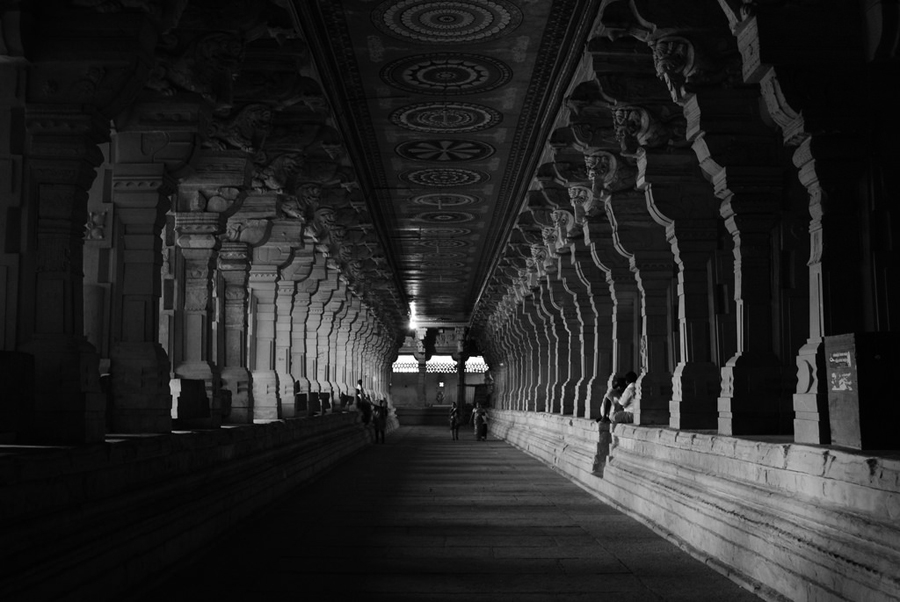
All these facts highly support the fact, that there is indeed a lots of truth about the facts described in the epic. The description of demons and monkeys, may just reflect a different culture of people than Lord Rama, who was an Aryan.
This epic poem from ancient Mesopotamian civilization, is believed by many to be the oldest work of literature. The epic of Gilgamesh was written in cuneiform script- the oldest form of writing in the World. The oldest version, which is also called – Old Babylonian version, is believed to be written around 18th century BC, has only a few tablets remaining as it’s evidence; but later a revised standard version was written between 13th to 10th century BC. The vanishing of the cuneiform script around 1st century AD, was the reason that the epic stayed hidden for a long time till it’s rediscovery, in the modern age by scholars, who deciphered the cuneiform text.
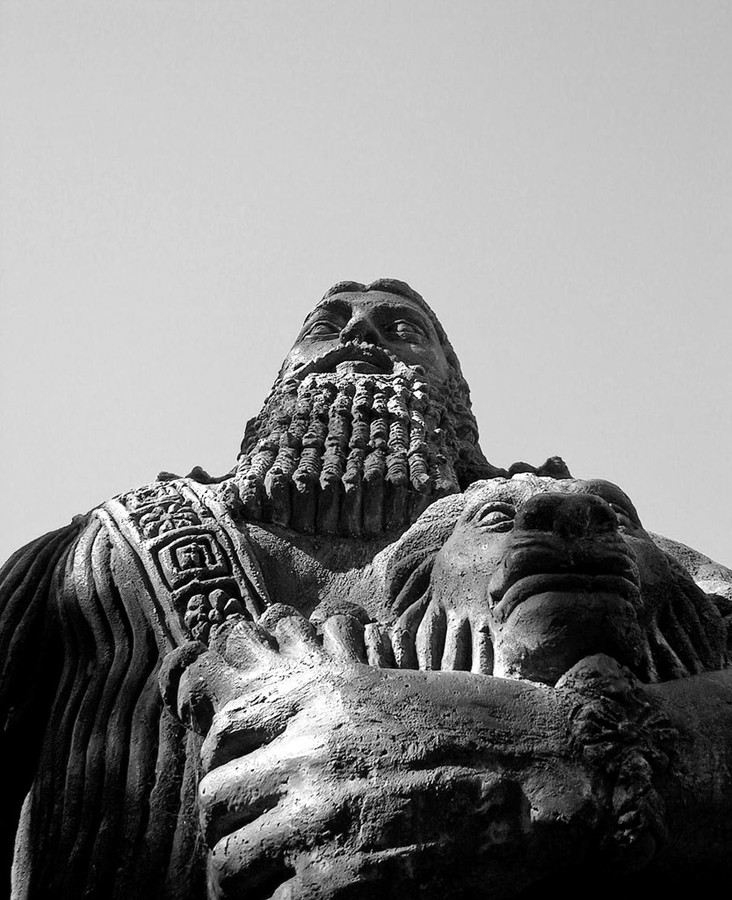
Gilgamesh was ruler of city of Uruk in the land of Sumer in ancient Mesopotamia and is also the hero and the main protagonist, in Epic of Gilgamesh. He was also a demigod, as his mother was the Goddess Ninsun and his father- a human (the former king of Uruk Lugalbunda). This mixed parentage gave him a superhuman strength .The story describes Sumerian king – Gilgamesh, and his enemy Enkidu’s (who later becomes his friend) journey to Cedar forest ( where the gods of Mesopotamian mythology live), to fight the demon Humbaba – who is the guardian of the forest, so that they can cut down the trees present there & achieve fame and glory. After killing the demon, they take back his head to Uruk on a raft, built from massive trees.
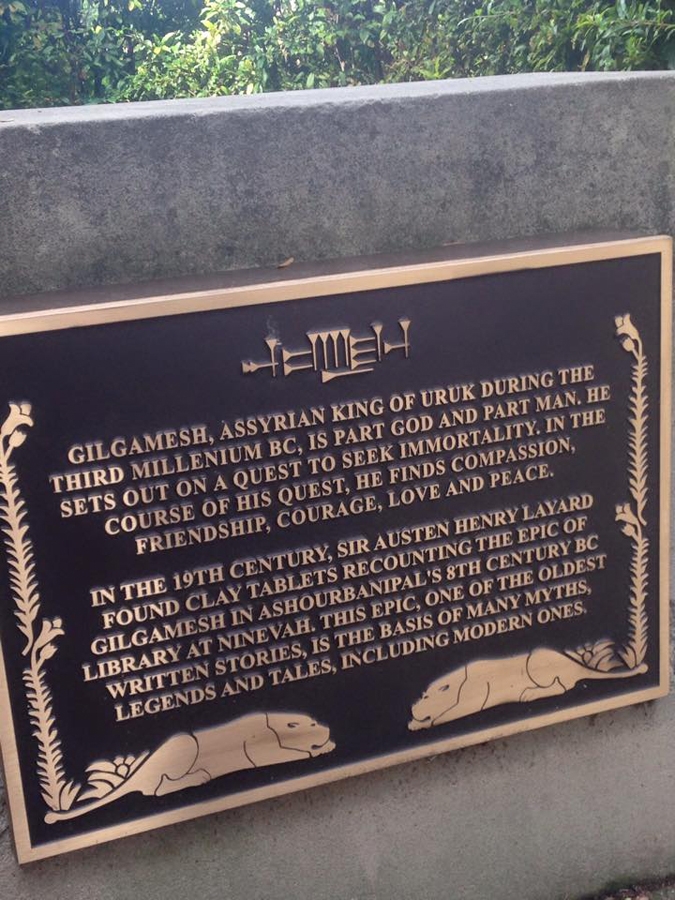
It also describes their fight and killing of Bull of Heaven (a mythical beast capable of immense destruction) send by the furious goddess Ishtar, when Gilgamesh refuses to become her lover. (The Bull of heaven has been suggested as a metaphor for constellation Taurus) .Enraged by their actions, gods condemn Enkidu to death. This death of a close friend makes Gilgamesh realise his own weakness and mortal status .So Gilgamesh goes searching for immortality, but in spite of much trials and tribulations, he fails to find it and returns home to the city of Uruk. The story ends with the message of – ‘Forget death and seek life’, implying that a human being should enjoy life’s simple pleasure. This story can be interpreted as a biography of an ancient king or an adventure, or a tragedy/comedy depending on the reader’s viewpoint.
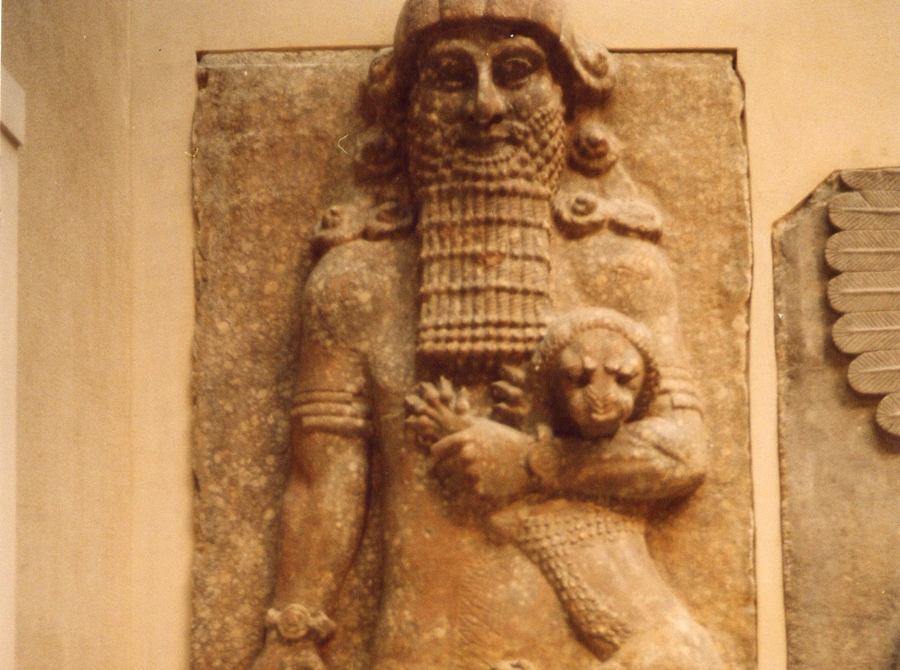
Finally Gilgamesh achieves immortality, in form of his everlasting fame after death. Influence of the epic of Gilgamesh, later influenced other cultures and religions, who copied and integrated parts of it, in their own literature and myths. These similarities can be seen in the Biblical parallel mention/incidence of -- Garden of Eden, Noah’s Flood and advice from Ecclesiastes. Some also believe that, the Epic of Gilgamesh also influenced Homer, which can be seen in his epic poems like - Iliad and Odyssey.
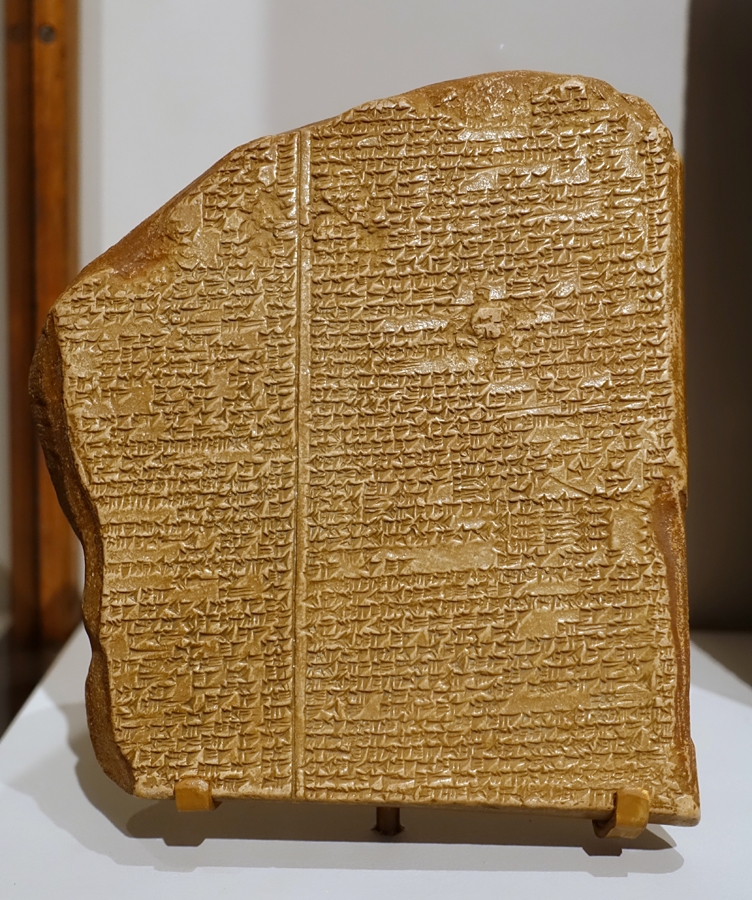
Scholars have accepted Gilgamesh’s existence as an historical fact, as the king of city state of Uruk, as his name is listed, as one of the kings of Uruk, in the Sumerian King List. The problem arises in determining the exact period on which he lived. Most of the scholars believe that he lived somewhere between 2800 BC and 2500BC. Historical evidence suggest that Gilgamesh built the city walls of Uruk to defend his people. After his death he was buried and the people diverted the Euphrates river, so that, the burial site of the dead king would be hidden within the river bed. Slowly with passage of time, there was a gradual accretion of his stories and his stature began to grow and finally he was glorified as a god and patron deity by the 21st century BC, King of Uruk – Utu hengal.
This is one of the two major (other being Ramayana ) Sanskrit epics, of ancient India. This epic was written by Hindu sage – Vyasa. The story revolves around the Kuruksetra War. This war occurs between the five Pandava brothers on one side, and their evil cousin brothers ( hundred Kaurava brothers) on the other ,who wanted to take away the kingdom of Pandava brothers unfairly. Lord Krishna (who is human incarnation of God Vishnu) supports the righteous brothers, but passively.
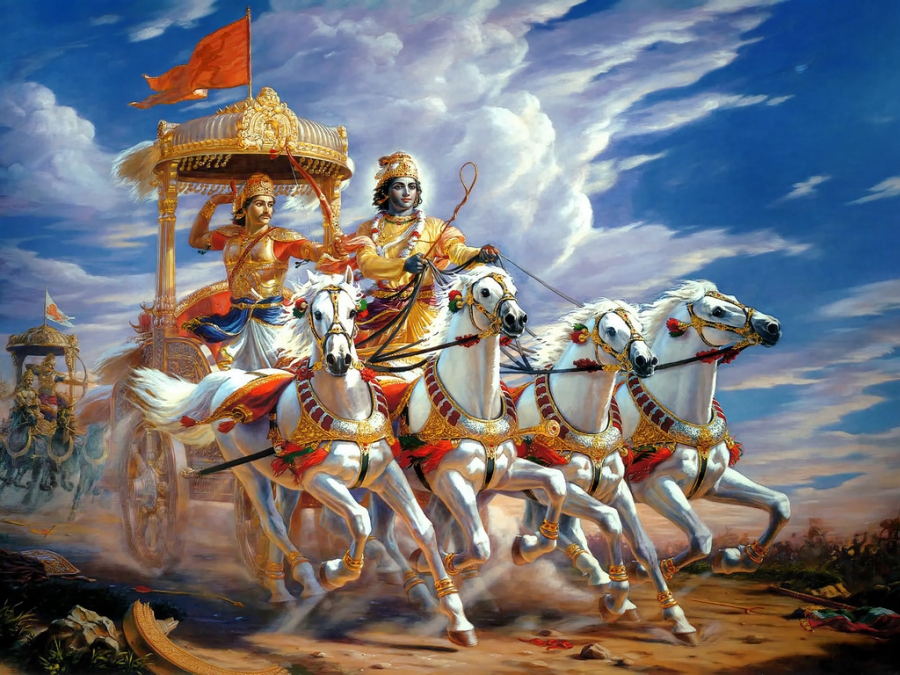
Mahabharata is describes as the longest poem ever written, and has over 200,000 individual verse lines. It is said that Mahabharata is approximately 10 times the length of Iliad and Odyssey combined. Bhagavad Gita, is a part of Mahabharata, which is of utmost importance to Hindus. It gives a devotional & philosophical guidance for society. It is concerned with the advice Lord Krishna gave to prince Arjuna, when at the beginning of Kurukshetra war, he refuses to fight – as he believes fighting and killing related family members is wrong. Bhagavad Gita, describes the advice of lord Krishna, about duty of Arjuna as a warrior, persons moral duty to society, the concept of Justice/Devotion/ Yogic ideals and secret of attaining salvation.
It is believed by lots of people in India, that events described in Mahabharata actually happened approximately 5000 years ago and many evidence both direct & indirect have been postulated, to prove this idea. Some of them are-
In many parts of the epic, it is described as- Itihas, which means history.
The predictions and detailed descriptions for Kaliyuga (present age) as given by Lord Krishna to Arjun in Bhagavad Gita, thousands of years ago, have come exactly true as described in the Epic.
The port city of Dwarka, which later got submerged under the sea (as described in Mahabharata), and belonged to lord Krishna, has been discovered by marine archaeologists. Massive fort walls, wharfs, piers ,jetty and other collaborative findings, as described in the epic have been found.
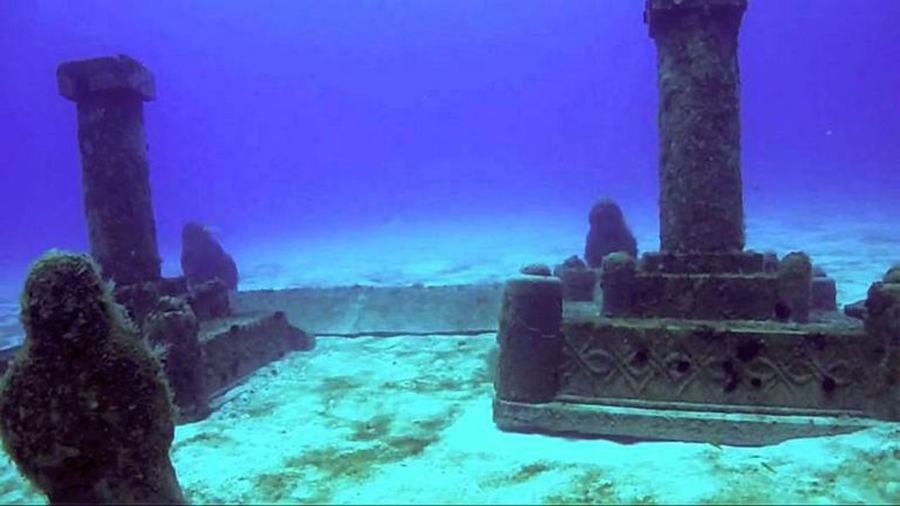
Many other ancient cities described in Mahabharata, have been found in modern era with artefacts like gold and silver ornaments, seals, copper utensils and terracotta discs have been discovered from these sites.
Megasthenes , the ancient Greek historian and diplomat , had described in his records, that emperor Chandragupta Maurya who had defeated Seleucus Nicator, ( Alexander the great’s general & founder of the Seleucid empire) was the 138th king in the lineage of Lord Krishna, hence providing supporting evidence regarding the historical basis of the great epic.
Another name of India is – ‘Bharat’, which is named after King Bharat, a famous personality mentioned in the epic.
Robert Oppenheimer, the head of Manhattan project, and father of atom bomb, after successful testing of the bomb had said – “Now I become death, the destroyer of worlds”, which are lines from Bhagavad Gita. He had also said that he had successfully tested atom bomb on modern times (and implying, that it was used earlier in Mahabharata war, of which Bhagavad Gita was only a small part).

These evidence lead many to believe that Mahabharata, is a part of ancient Indian history & not just a figment of popular imagination.
Conclusion
It has been said that – “Where History meets Myth, Legends are born “. It is highly obvious that many of these ancient epics discussed had some amount of truth in them. The notions of romanticism and superhuman heroic glory may have been added by poets and writers who came later on, to set a benchmark, to which the society may aspire for in difficult times. As George Washington Carver said – “Where there is no vision, there is no hope”
(Disclaimer – It is absolutely impossible to describe epics mentioned above in few pages. The description just summarises & reflects opinion given by different experts over the ages)